
Welcome back to the second Wild vS Data Reaper Report! We’re the experts from r/WildHearthstone, and we have partnered up with Vicious Syndicate to create the Wild Data Reaper Report! We will be contributing the write-ups and analysis for the report, backed up by the statistics that Vicious Syndicate has become famous for. The data presented in this article is based on 40,000 games.
This past month has been very entertaining for the wild format. We saw the top 64 wild open tournament bring some of the format’s strongest contenders into head to head combat. This all came to a boiling point in the finals, where wild specialists Alb987 and ControlTheBoard faced off. Alb won, taking the title of Wild Champion. Throughout the process of the tournament, some of the more innovative decks trickled down into the ladder, adding a splash of color to the settling meta.
Quick Links
Class/Archetype Distribution | Matchup Winrates | vS Power Rankings | Class Analysis & Decklists | How to Contribute | Credits
Class/Archetype Distribution
Class Distribution Discussion
After the release of our first Data Reaper Report, we began to see the meta start to settle down a bit. While some decks were still in flux (notably, Midrange Paladin and Secret Mage, both already tier 1), the other decks made minimal tech changes over the period of a month. While the lists themselves stayed relatively consistent, the play rates of these decks varied over the course of the month.
It is not surprising to see that Pirate Warrior is still the highest played deck on the ladder. However, compared to our last report, there has been a slight decrease in play of the deck overall, with a larger drop off at R5-Legend ranks. It seems that with most of the ladder teching against Pirate Warrior, the deck is no longer the best deck in the format, merely one of the best. On the control side of the Warrior class we see Taunt Warrior slightly edging out Control Warrior at all ranks, except for R5-Legend, in which we see a spike in Control Warrior which evens out their play rates. Control Warrior has a higher winrate against the more aggressive decks on the ladder while Taunt Warrior is slightly favored in the control matchups, which makes sense as players have traditionally swapped to more aggressive decks to push for the home stretch of rank 5 to legend.
Mage remains a diverse class, as it was last month. Nevertheless, Reno Mage has pulled ahead as the most played Mage deck. This is due to its favorable matchups against early board-centric decks such as Egg Druid, Pirate Warrior, and Aggro Shaman. You can find more Freeze Mage played at higher legend compared to the rest of the ladder, a pattern also found in the standard format.
Priest has remained similar in appearance to last month, with Reno Priest actually being just slightly less popular than Pirate Warrior in ranks 15-11. This play percentage decreases as you climb up the ladder, unlike Combo Priest, which has a higher rate of play the higher up you go. Similarly to last month, as a player ranks up, the amount of Priests they meet decreases.
Shaman gains a new archetype this month! This is the first time we have seen Token Shaman in the wild, and it is surprisingly similar to its counterpart in standard. It plays similarly to the current wild version of Midrange Paladin, establishing resilient boards and recovering from AoE again and again until it kills with Evolve/Bloodlust shenanigans. The list has surpassed Control Shaman in popularity. Otherwise, the class has maintained its status quo, with Mid Shaman having the overall highest play rate, but Aggro Shaman having the highest play rate from ranks 15-10.
The Paladin class has been shaken up significantly since our last report. Murloc Paladin has taken the helm as the most played Paladin archetype overall and below rank 5. However, Midrange Paladin is the most played variant of the class from rank 5 to legend. This deck saw some improvements over the past month, with many iterations sticking around on ladder. Secret Paladin has taken a backseat, and is now the third most played variant of the Paladin class.
Druid has stayed fairly consistent for the past month, with the only major change being that the play percentage of Egg Druid slightly increased in the lower ranks. However, within the class, there have been a few new variants added to the scene, including a beast centric version, as well as a murloc version.
Warlock is more playable in Wild than Standard, thanks to Renolock. Zoo is almost dead as of now, with the play percentage of Zoo decreasing even more. Warlock has seen a decline in play over the past month, falling down to the second least played class.
Hunter is the least popular class in Wild at the moment but Midrange Hunter, its main viable archetype, has actually seen a tiny bump in play over the past month.

Power Rankings Discussion
Midrange Paladin stays at the top of our Power Rankings for this month. The revitalized wild version of this deck has been tinkered with over the past month, and while it is more refined than it was last month, there are many different variants that exist on ladder, with no one version of the deck dominating. It is surprising to see that the surge of new pilots hasn’t dulled this deck’s status as top dog in our power rankings, which demonstrates that the deck is truly powerful.
Secret Mage has snuck up into second place in our power rankings. With only a few new cards from Un’Goro, the deck has reached a point of saturation, and with the vast amount of wild secrets the deck has found a spot in the tempo slot which has typically been filled by Flamewaker Tempo Mage. Kabal Crystal Runner is a very valuable minion, and is extremely useful when it can be snuck out for little or no mana. Roffle’s version of the deck seems to be more refined than some of the lists that we had been seeing last month.
Control Shaman is a deck that runs a ton of removal and powerful deathrattle minions, with N’Zoth and Kel’Thuzad as finishers. This enables it to clear the board time after time against aggressive decks. The deck struggles against OTK decks which are currently light in this meta, with the main OTK decks (Freeze Mage, Combo Priest, Crystal Rogue) all having a lower play percentage together than Pirate Warrior alone. Control Shaman is very strong against the format’s best decks, due to heavy taunts and the efficient removal that it possesses. Against other control decks, it can often win through value N’Zoth and reincarnate shenanigans. Currently, the data shows Control Shaman to be the best control deck in the Wild meta, and a strong choice for climbing the ladder.
Once the undisputed champion of the wild, Pirate Warrior now has to compete with some of the up and coming decks that Un’Goro brought. The deck’s decline in popularity is likely due to a lot of decks teching heavily against the matchup, including cards such as Golakka Crawler and Gluttonous Ooze. Ship’s Cannon is still the most powerful card in the deck, and allows for powerful tempo swings or large amounts of damage. Blizzard printed Golakka Crawler to keep Pirate Warrior in check, as the additional powerful wild cards push it over the edge. Pirate Warrior remains a force to be reckoned with, and must be accounted for due its sheer numbers.
Class Analysis & Decklists
Druid | Hunter | Mage | Paladin | Priest | Rogue | Shaman | Warlock | Warrior
Egg Druid was present in four of the top eight and both of the final lineups in the recent official blizzard wild tournament. Further attempts to refine the Egg lists have resulted in interesting builds more similar to the standard format’s Token Druid decks. Some have even cut Dragon Egg and Nerubian Egg, the namesakes of the deck in the wild format, for cards such as Enchanted Raven and Vicious Fledgling, the latter potentially being game ending when Innervated out on turn 1. These changes make the deck more explosive, while sacrificing resiliency to board clears.
The meta remains quite hostile towards Jade Druid. While the prevalence of aggressive decks on ladder may not in itself be healthy for Jade, the recently announced Caverns Below nerf means control decks may take up more footing on ladder, allowing Jade Druid to reintegrate itself into the meta.
Hunter is, sadly, still at the lower part of the tier list. It is outclassed by decks such as Midrange Paladin, and it is often presented with threats it cannot efficiently deal with or get pressured by aggressive decks that are quicker at getting to the board. Hunter also has a lot of trouble dealing enough damage to its opponent to close the game out.
The traditional midrange list has been performing the best (or least badly, we should say).
- Classic Midrange Hunter
- Fire Fly Midrange Hunter
- N’Zoth Midrange Hunter
- Rhino Midrange Hunter
- Mid Secret Hunter
- Face Hunter
Mage surged in popularity when Un’Goro was released, largely due to the addition of new and powerful staples: Primordial Glyph, Arcanologist, Pyros, and Meteor. This month, the class has demonstrated that it is here to stay as a well-rounded pick for laddering. The major archetypes being played are Tempo (with secret mage being a particularly unique form of tempo), Reno, and Freeze, similar to last month.
Tempo Mage tends to be broken down into the original Flamewaker shell and the new Secret lists. The strength of both decks revolves around resolving an early threat to gain control of the board state, then abusing either secrets, Flamewakers or removal to force your opponent to trip over their own curve until you can seal the game with a tight burn package. This archetype still performs exceptionally well against a lot of the control decks in the meta, but both decks tend to take issue with some of the extremely aggressive decks. Many aggressive decks have plenty of cheap spells or weak creatures to play around secrets without losing too much tempo, and if a tempo mage can’t keep a threat on board for at least a turn, the game will quickly snowball away from them.
Reno Mage abuses the power of Reno Jackson and Kazakus, preferring either a general fatigue strategy by building a difficult-to-answer N’Zoth board state, or by executing an Antonidas burn finisher. Reno Mage’s greatest strength, however, is that it is the easiest Reno shell to tech against the swarm of efficient aggro decks in the format. Cards such as Volcanic Potion, Flamestrike, Frostbolt, and Ice Block can allow a Mage to stretch the length of the game until it finds Reno or stabilizes by other means. Un’Goro introduced Pyros, Primordial Glyph, and Meteor to the shell, giving Reno Mage additional outlets for value and flexibility. This deck is highly recommended for a smooth laddering process, especially since some of its worse matchups are seeing a little bit less play this month.
Freeze Mage is a difficult, but extremely consistent and fairly powerful deck revolving around surviving and delaying your opponent’s game plan until you can kill them from hand, generally in a single turn. This deck preys on control decks that have no way to gain large amounts of armor or put enough pressure on the Freeze Mage to keep them from spending all their turns drawing. Matchups can feel enormously polarized, for better or for worse, making this deck excellent if you’re experience a particularly dense pocket of decks you do well against. For instance, Control Shamans are easy prey. In contrast, games can feel enormously stacked against you if your opponent has a way to play Ice Block (or steal one from you), or is just simply too fast to allow you enough time to win.
- Snou’s Freeze Mage
- Generic Freeze Mage
- MeknugetZz’ N’Zoth Reno Mage
- Specialist’s Secret Mage
- PHONETAP’s Tempo Mage
Midrange Paladin continues to be the strongest deck in the meta, despite predictions by many that increased playrate and profile would lead to a lower winrate. Between ranks 5 and Legend, Midrange is the most represented Paladin archetype, but at lower ranks Murloc and Secret Paladin see more play. This may indicate that Wild devotees are playing Recruit-synergy Midrange lists more often than the general population, or just that the most competitive players are more likely to play the best deck in the meta. Murloc Paladin sees a <50% win rate between ranks 5 and Legend, so we recommend that players serious about Wild play Recruit-synergy lists instead, or return to slamming Mysterious Challenger on curve.
At the Hearthstone Wild Open, three of eight players brought Midrange Paladin (with a fourth bringing Control Anyfin), but the lists were still divergent, indicating that Midrange Paladin still has yet to be refined into a canonically “best” list, and that there are a number of very powerful ways to build this archetype.
Secret Paladin again finds itself in tier 1, having gained immensely from the ability to run Hydrologist, Golakka Crawler, and Tarim. It has a similar (but less favorable) matchup spread to Midrange Paladin.
Japanese player Snou has held #1 Legend on the Asia server this month with his build of N’Zoth Control Paladin, which has a weak Pirate matchup but is more resilient to Control Shaman than Midrange lists.
NA server’s #1 Legend this month was also a Paladin deck. Awedragon continues to have incredible success with his midrange Anyfin list, which is now running 2 Lost in the Jungle for additional Recruit synergy.
- Chai/Haydumb’s Midrange Paladin
- Bertik’s Steward Midrange Paladin
- Snou’s Control Paladin
- Awedragon’s Midrange Anyfin Paladin
- Chai’s Secret Paladin
This month, Priest was the 2nd most played class on ladder (at 13.62%) and was actually the most popular class in the Wild Open, showing up in 6 lineups – two-thirds being Inner Fire combo priest. However, Noriggoon exchanged the Inner Fire core to become a more OTK oriented list, running cards such as Prophet Velen, Mind Blast, and Alexstraza. Combo Priest was very successful throughout the whole of the June Season and it has proven yet again to be one of the best decks to play, with Meati finishing at #1 EU with a combo priest variant. Some players that have also played to high legend prefer running injured Blademaster and Light of the Naaru.
Capilano’s Dragon Priest remains one of the most common lists as he held #1 for 2 weeks with it. The low mana cost minion based variation of the deck is still a good pick for ladder as it is strong against aggressive decks due to its ability to fight for the board early on.
Reno Priest is still the most popular archetype of the class on ladder as it allows for a lot of creative concepts such as inspire, quest or dragon lists. The dragon variant has stronger early game than the N’Zoth variant but sacrifices late game to do so, which means that picking the right variant of Reno Priest for the meta is key.
- Control’s Combo Priest
- Masinc’s Dragon Reno Priest
- Sipiwi94’s Reno N’Zoth Priest
- Capilano’s Dragon Priest
Rogue is in a strange spot in the meta at the moment because it struggles with aggressive decks but regularly punishes control decks such as Reno decks. If played in the right meta, where Pirate Warriors aren’t as prevalent, some Miracle Rogue variants can prove to be extremely effective as players such as Control, Capilano, and Hoff have demonstrated finishing or playing to top 10. Rogue remains a strong tournament choice, with the ranked ladder being a bit more hostile to the class.
The rogue quest nerf will impact the play of the class a bit, but not as much as it will in standard, as the play rate of quest rogue is a lower in wild overall.
- Capilano’s Giants Miracle Rogue
- Control’s Questing Miracle Rogue
- Hoff’s Crystal Rogue
- SHRoyalBaiZe’s Crystal Rogue
Shaman maintains a strong meta presence as Wild’s most versatile class. This month introduces Token Shaman to the Wild Data Reaper Report. Token Shaman is built to overwhelm the opponent with a wide board rather than finishing off the opponent with direct damage spells. With its board recovery mechanics, Token Shaman is more resilient to removal. However, Token Shaman remains generally inferior to more traditional Aggro Shaman builds.
Despite suffering nerfs, Aggro Shaman was considered the strongest deck by the end of the Year of the Kracken. While the archetype gained very little in its transition to Wild, the deck remains among the strongest decks in the format. During the Hearthstone Wild Open Qualifiers, Aggro Shaman was among the most successful decks. In fact, the two finalists each sported Aggro Shaman in their line-ups. The deck’s strength is also demonstrated on ladder as it boasts a Tier 1 win rate across all rankings.
Following our previous Data Reaper Report, Midrange Paladin has seen an increase in play at the upper ranks. This has lead to an increase in Control Shaman’s win rate, pushing the deck to a striking 56% win-rate at the high ranks of ladder. While the deck is dominant against aggressive and some mid-range strategies, Control Shaman can struggle against control decks, such as Renolock. This has caused some to return to the Leeroy OTK build, which was more commonly seen before Un’Goro.
- MeknugetZz’s Aggro Shaman
- Poach’s OTK Reincarnate Control Shaman
- Sipiwi94’s Reincarnate Control Shaman
- Masinc’s N’Zoth Control Shaman
- Oracle’s Midrange Jade Shaman
- Coldstory’s Control Jade Shaman
- Token Shaman
- Murloc Shaman
Reno Warlock continues to underperform in the Un’Goro meta. Most of these struggles can be attributed to the lack of favorable matchups across the rest of the meta. Out of the six Tier 1 decks that make up the bulk of ranks 5 to Legend, Control Shaman is the only favorable matchup for Renolock. Aggro lists are able to burn down Renolock before it’s able to stabilize, and midrange decks can out-tempo Renolock with the amount of synergy provided by the current card pool in Wild. Renolock also fails to dominate any current meta decks and even its best matchups, such as Zoo Warlock, Taunt Warrior, and Control Warrior, aren’t played enough to compensate for all of the bad matchups.
Although Renolock hasn’t been performing particularly well, the good news is that it continues to see play across all ranks, including the top of legend and tournaments. Hurryupidiot finished the last season in the top 10 for the AM server, and masinc brought a N’Zoth Renolock list into the top 4 of the Hearthstone Wild Open Finals. Renolock also offers flexibility with card choices, allowing card substitutions to counter a variety of decks found on ladder. Feel free to tech in the anti-Pirate Warrior cards, Golakka Crawler and Gluttonous Ooze, if you need to, or Kezan Mystic if you’re struggling against Mage. There are lots of ways you can currently pilot the archetype, so it’s worth exploring what works for you.
The upcoming balance change could benefit Renolock, since Crystal Rogue is one of its worst matchups. The decline of Crystal Rogues may push for more of a control presence which would be beneficial for a deck like Renolock; Jaraxxus has always been successful at out-valuing traditional control decks. Aside from Jade Druid, summoning a 6/6 every turn eventually wears down control.
Zoo Warlock is still in the bottom rungs of the meta. Ladder is getting even more unfavorable for Zoo, with Pirate Warrior and Midrange Paladin still hard to deal with and control decks teching heavier to counter the aforementioned board control based decks. We did a fair amount of testing with Zoo and have concluded that it is still a mediocre deck. It has some nice matchups where it shines, but is highly unfavored against most meta decks.
Hopefully with the new expansion, we will get more tools for better board control, and allow Zoolock to shine once again.
- Hurryupidiot’s Reno Warlock
- Masinc’s N’Zoth Reno Warlock
- Ant’s 12-Win Brawl Zoo Warlock
- Zed’s Classic Zoo Warlock
- Zed’s Discard Zoo Warlock
Pirate Warrior is still one of the best decks in the format. At the Hearthstone Wild Open Finals, half of the 8 players brought the deck and showed off its strength and raw power to everyone who was watching. Almost all of the players’ lineups either had the game plan to Target/Soft Target Pirate Warrior or to ban it. The deck did not underperform either, with both the winner Alb987 and the runner up Control including Pirate Warrior in their lineup.
Taunt Warrior, although still being unpopular, was brought to the Wild Open Finals by Noriggoons. His build was very interesting, including Garrison Commander for a very powerful combo with DIE, INSECT!.
Sadly, nobody brought Control Warrior to the Wild Open Finals. However, Scorpion and Controltheboard have recently had success with a (non-N’Zoth) Fatigue Iron Juggernaut build of the deck. This list is meant to target control decks, losing a lot of its strength against the midrange and aggressive decks by getting rid of Deathlord. The deck’s approach against control decks is to get them to fatigue, then play a discounted combo consisting of Brann Bronzebeard, Coldlight Oracle and Iron Juggernaut. This combo deals 35 damage if they have no cards left (two mines for 20, 30 from the Coldlight fatigue draws, and then 5 at the start of their turn).
- Control’s Pirate Warrior
- Scorpion’s N’Zoth Control Warrior
- Scorpion’s Juggernaut Control Warrior
- Scorpion’s Taunt Warrior
- Noriggoon’s Taunt Warrior
Our Data Reaper Project, including the Data Reaper Live (Beta) has 2,600 active contributors. Without them, this project would not be possible, so we’d like to thank all of our contributors for their help. If you’d like to sign up to share your Standard or Wild game data, click the banner below.
Contributors
Here are all the people that participated in bringing you this edition of the [Wild] vS Data Reaper Report:


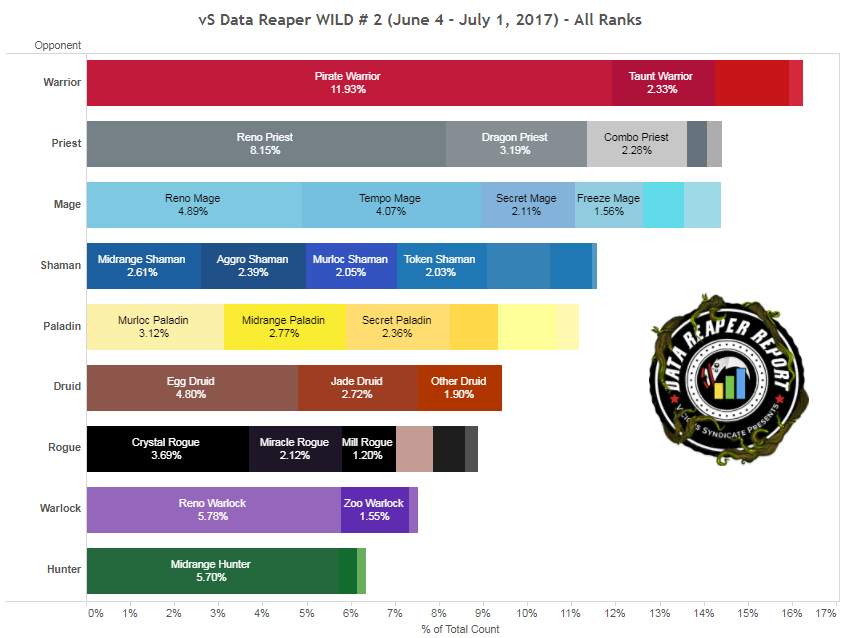
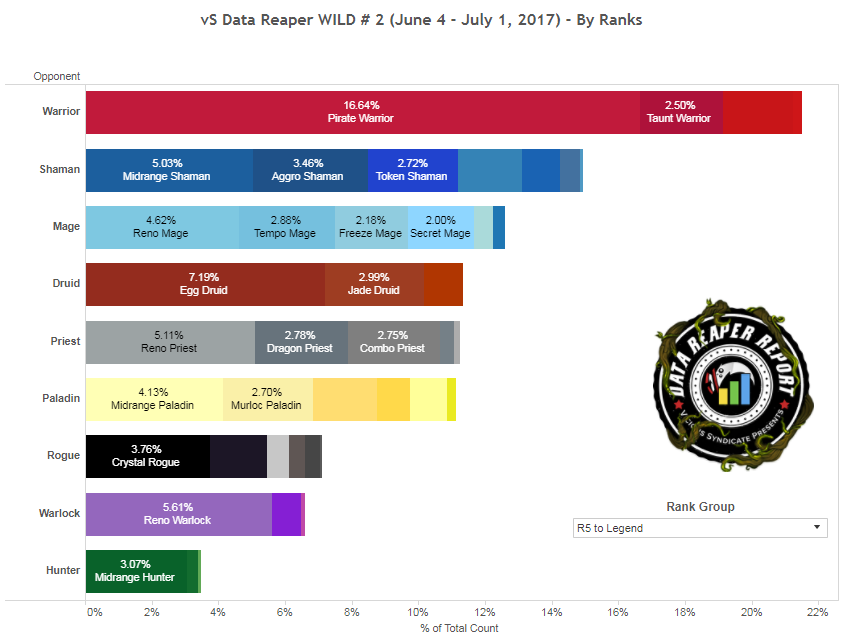

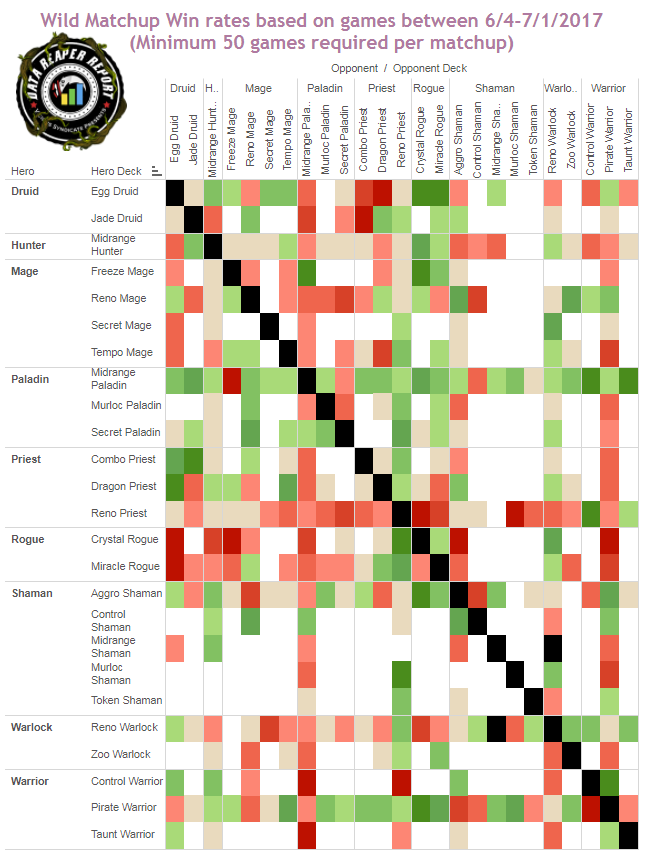
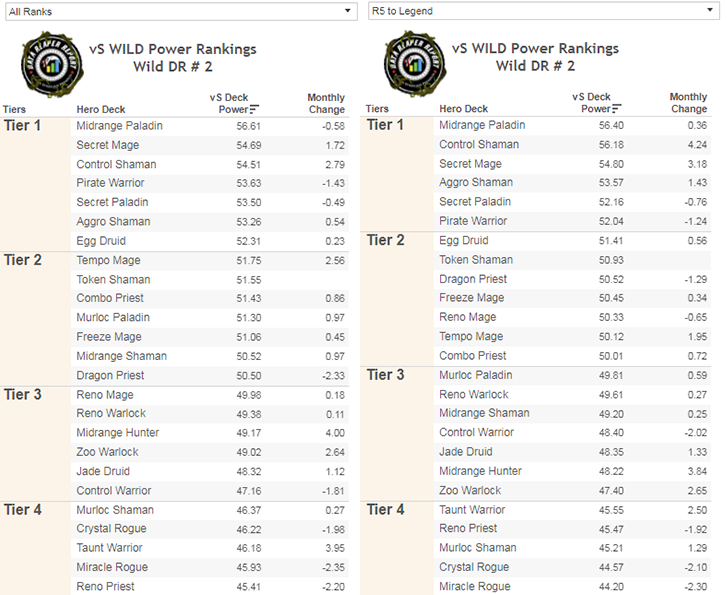










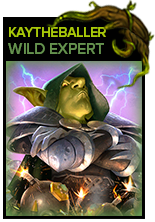
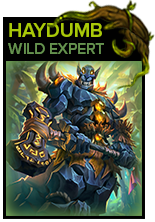
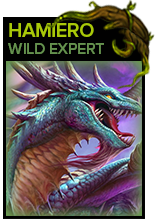
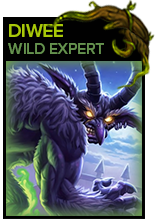

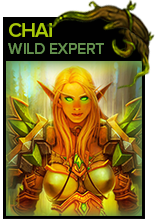
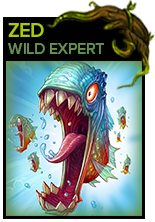
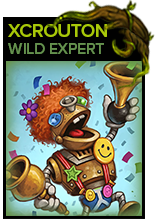
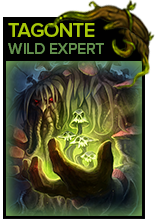
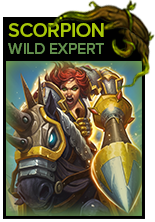
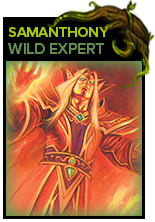
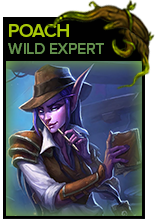
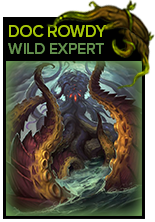



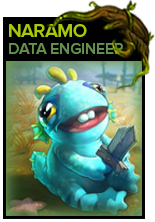

How do you come up with your “Power Rankings”? I assume they are just overall winrates of the deck. I was curious because I like playing control shaman and think it is pretty good deck to climb with, at least to rank 5, but then struggles against some other decks like jade decks, combo decks, tempo mage, etc. I wanted to see the deck matchup chart to see how it aligned with my own results. But unfortunately, a lot of the matchups are blank on the chart, around 70% of them(I’m assuming because there was less than 50 games minimum over the month). For a class that you rank as high tier 1 deck, there seems to be very little data to support that conclusion based on matchup chart. In other words, it seems you ranked control shaman very high based on very limited data. Furthermore, a deck that the 2nd or 3rd best deck in the game based on the power rankings isn’t even listed in the top 3 most played shaman decks in the class distribution chart. Seems odd to me based on my own experience with the class.
Why there are no live data on wild like there are on standard? Would be nice to have access to current info at all times and see how meta shifts between reports.
Hey I just wanted to say that I love that there’s stuff like this out now because there wasn’t much if any wild info online for quite a while. Now my question is: if I wanted to have one archetype for each class, would should I work on building? I like to have one deck for each class so which deck is best for each class for me to have in my collection
Depends on the decks you’d like to play, but my suggestion would be Pirate Warrior, Egg Druid, Reno Mage, Renolock, Dragon Priest, Midrange Hunter, Miracle Rogue, Control Shaman and Token Paladin.
just play decks you like instead of looking for the strongest deck in the meta.. that will change anyway, if now control paladin is strong, then next month because another deck becomes popular for climbing a totally different midrange pally could have the better winrates now…
i prefer control, midrange and fun decks instead of looking for the best deck in the meta.. every deck can be countered..
and you can get legend with alot of decks, aslong as you pilot it well.. and you get better piloting a deck and understand the matchups by just sticking with 1 deck instead of switching around the whole time..
right now that is for me midrange pally.. i really love the darkshire in that deck.. works soo well with all the recruits, especially with the vinecleaver….
the deck can be both control or aggro.. depending on your draw and matchup.. last game i won by a turn8 darkshire+stand against darkness + 1 recruit from my vinecleaver.. into a turn9 stegadon to give my 5 recruits windfury and give it +2/+2 from the quartermaster.. enemy went down from 25 to 0 that turn9
Guys, you rock ! Keep up the good work.
I’m being a bit picky but you mention decklists/players that you do not feature which is frustrating. I’ve spotted at least two.
Roffle’s Secret Mage (Power Rankings Discussion)
AAEBAf0EBMABwwH6Dp4QDXG7ApUDlgXsBbkGyQ33DYkO17YCh70CwcECmMQCAA==
Noriggoon’s OTK priest (Priest Section)
AAEBAa0GCAntAaEExQS5BtcKkg/WEQvlBPYH1QjSCvIM+wyND/oRlhSnrALRwQIA
Suggestion : I’d love if you added twitter accounts of the players to the decklist page.